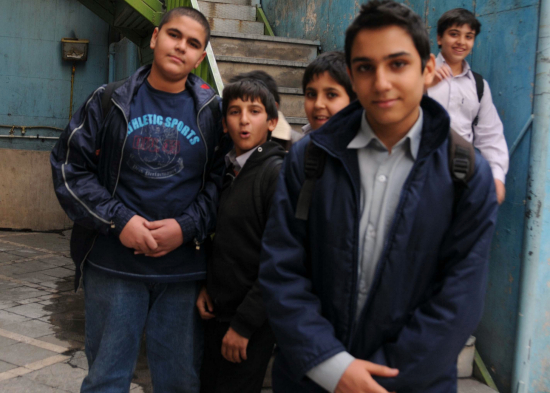
Students at Abrishami day school |
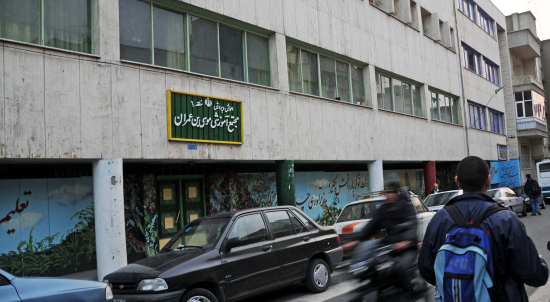
Abrishami school and synagogue |
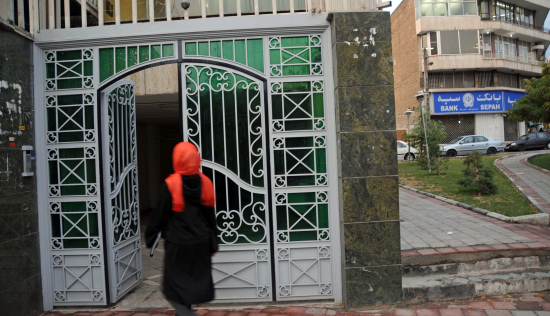
Abrishami entrance |
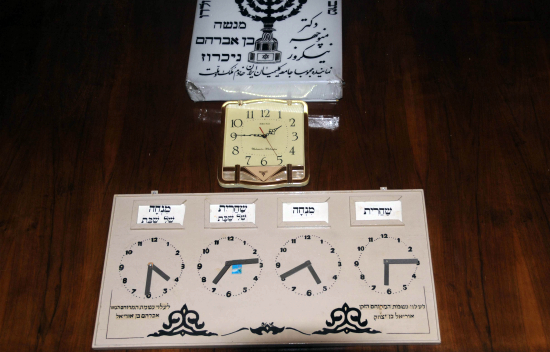
Prayer schedule |
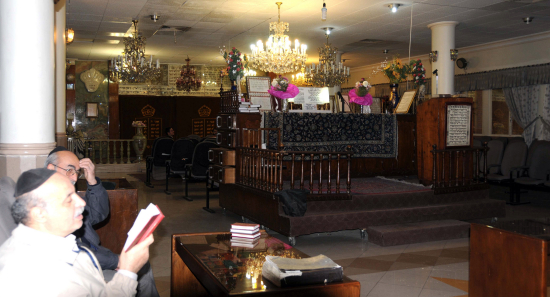
Waiting for the afternoon prayer |
IRAN
Jewish Life In Persia
On Exhibit In L.A.
STORY AND PHOTOS BY TIM BOXER
IGHT and Shadows: The Story
of Iranian Jews, an exhibition of the history and
contemporary life of the Jews of Iran, is at the Fowler
Museum at the University of California/Los Angeles, 308
Charles E. Young Drive North, through March 10, 2013. The
story unfolds over 2,700 years, beginning with the first
Jews exiled from Jerusalem by the Babylonians.
This in-depth portrait of Iranian
Jewry originated at Beit Hatfutsot/The Museum of the Jewish
People on the Tel Aviv University campus.
I had an opportunity to
investigate Jewish life in Iran four years ago, thanks to
Thomas Steinmetz, chairman of the International Council of
Tourism Partners (ICTP) and publisher of eTurboNews. He
invited me to join him to the first International Tour
Operators Convention in Tehran in 2008. The convention was
organized by the Iran Cultural Heritage, Handicrafts and
Tourism Organization (ICHTO) to showcase the countryís
tourism potentials, which I found vast and magnificent.
Keynote speaker Esfandyar Rahim
Mashaee, vice president of Iran and president of ICHTO,
applauded the advancement of tourism for the sake of global
security, which he maintained is more important than
culture. Actually he considered the development of tourism a
strategic matter.
"Iran is ready to serve, to help
love and friendship materialize," he declared. "We are ready
to sacrifice ourselves for that noble goal. We think of
nothing but peace and friendship, dialogue, interaction and
the exchange of opinion."
Mashaee, President Mahmoud
Ahmadinejadís closest adviser, exhorted the global gathering
of travel agents and tour operators to carry his message
back to their countries: "Iranís name is associated with
love, peace and friendship."
From the Convention Center I
embarked on a personal detour. I asked my guide and his
driver to take me to the office of the Tehran Jewish
Committee, the official organization that oversees the
Jewish community. The head of its cultural committee
is a young man named, Farhad Aframian. I asked
my guide to leave the office and wait for me in the car (so
as not to intimidate by his presence).
Aframian said of the 20,000 Jews
in the country, about 8,000 live in the capital. The rest
are concentrated in the ancient cities of Shiraz and
Isfahan.
Speaking flawless English,
Aframian insisted thereís no anti-Semitism in Iran. The Jews
maintain cordial relations as long as they donít have any
communication with Israel or espouse Zionist feelings.
He gave me a booklet, in English
and Farsi, that describes Jewish life in the Islamic
republic. The Tehran Jewish Committee supervises kosher
facilities in restaurants and meat markets. It maintains
three cemeteries. Graves include Jews from Poland who found
asylum in Iran during the Holocaust.
The booklet also states that,
although many Jews fled following the 1979 Islamic
revolution, the welfare and security of Jewish citizens
continue "at a somewhat desirable level." Jewish authorities
view "humiliations" from the mass media as a result of
"actions of political Zionism and the regime of Israel." The
Jewish Committee responds to attacks on Iranian Jews by
affirming its separation from Zionist causes and protesting
against crimes of Israeli regime and violation of human
rights by this regime."
It is noteworthy that the Tehran
Jewish Committee operates "under supervision of the Ministry
of Interior, and Ministry of Cultural and Islamic Guidance
and Endowments Organization," as the booklet puts it.
As the Tehran Jewish Committee
avoids any connection with Israel, members rely on their own
resources for communal needs. "We publish our own siddur
[prayer book], and import from France a knife for kosher
slaughtering, tallit, tefilin and mezuzas,"
Aframian said. There are six kosher butchers, one kosher
restaurant, a Jewish library, and two Jewish day schools,
one for girls and one for boys. "Jews serve freely in the
army for 18 months after high school," he said. Many Jews
have relatives in the U.S.
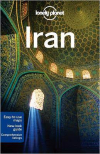 Resources
Lonely Planet: Iran (paper, 376 pages,
$26.99,
Amazon.com Price:
$19.70) is packed with countless maps so you canít get lost in this exotic fascinating land. This new edition has been revised and updated and refined tremendously. Resources
Lonely Planet: Iran (paper, 376 pages,
$26.99,
Amazon.com Price:
$19.70) is packed with countless maps so you canít get lost in this exotic fascinating land. This new edition has been revised and updated and refined tremendously. |
Aframian gave me the address of
the prominent Abrishami Synagogue but my driver and guide
both were unable to find the street. We asked directions
from the traffic cop at a busy intersection. He smiled at
the American visitor in the car, posed for a picture, and
pointed us in the right direction.
We arrived at the synagogue and
adjoining day school just as the students were coming out of
class. They were quite surprised to encounter an American at
a time when banners on street poles were proclaiming "Death
to America" and "Death to Israel."
The kids spoke English, and one
was kind enough to escort me into the synagogue. It was just
before the afternoon mincha service. Two elderly men
were waiting for a minyan of worshipers.
At a wooden table facing the ark,
five young businessmen were engrossed in the Talmud. The
group meets after work for daily study.
We also went to the Yousef Abad
Synagogue but found it closed. My guide called the watchman,
Rachmat Shamsion, who kindly came to unlock the door for our
visit. Shamsion is a retired boutique owner who lives close
by and volunteers to help the congregation. He doesnít speak
English so my guide interpreted. Shamsion said his daughter
Devora lives in New York. Her husband, Mehrzode Gamze Lítova
is a filmmaker in Brooklyn.
On a subsequent trip to Israel I
contributed digital images of Tehran synagogues to the Beit
Hatfutsot/Museum of the Jewish People for the permanent
collection of their Visual Documentation Center.